As we gear up for the next annual Touge California in the hills of Southern California, we are reminded of the cars that came with us last year. We had a truly eclectic mix ranging from built track beasts to pristine grand tourers — and one yellow subcompact hatchback. The Mazda GLC, or Great Little Car, was perhaps the rally’s underdog, cheered upon by all and putting a smile on everyone’s face. Its cute mug, however, belies its importance to Mazda history.
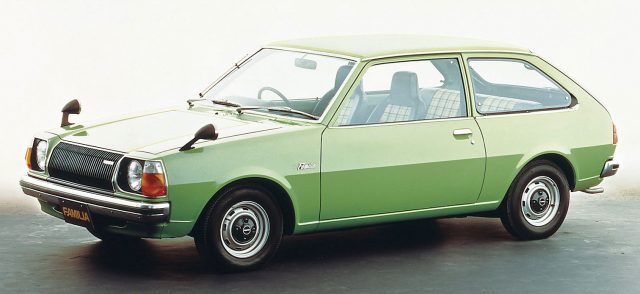
GLC was the North American moniker for the third generation Mazda Familia. With eight generations spanning forty years, Familia was one of the earliest and longest-running models in Mazda history. It’s also one of the world’s more ubiquitous cars, with several generations having been sold in markets across the globe, sometimes as rebadged Fords. Across Asia and Oceania from the 1970s to 1990s, for instance, the Familia (mostly known as Ford Laser) was the go-to car for both families and businesses alike.

Lest you think the Familia purely utilitarian, though, it was also the first affordable rotary Mazda, introduced as the Familia Rotary Coupé in its second-generation in 1968 and soon joined by a sedan in Japan. In the US it was badged as the R100 and was the car with which Mazda established a North American presence.
It also has competition pedigree galore, following the Cosmo Sport’s endurance racing footsteps to Nürburgring and Spa-Francorchamps. It battled head-to-head in those events against the likes of Porsche 911, planting the seed for Mazda’s lust for endurance racing.


In the 1980s and early 1990s, it became Mazda’s contender in the World Rally Championship. The ensuing turbocharged four-wheel-drive models, the Familia/323 GT-X and the later GT-R homologation special, foreshadowed the likes of Subaru WRX. Spunky and spirited, the model was a proper Mazda through and through.
The GLC was a product born in the aftermaths of the 1973 oil crisis. Efficient, small, and cheerful was the antidote to eight-cylinder gas-guzzling land yachts. Air quality and pollution problems were also gaining serious recognition, and with the rotary engine powering much of its lineup around this time, Mazda was facing many technical and financial challenges. The rotary’s efficiency and cleanliness had to be improved, and the company needed sustainable sales volume.
Debuting in 1977, the third-generation Familia carried the letters AP, for Anti-Pollution. Riding on a rear-wheel-drive chassis with proven component design, it was a sensible and responsible means of transportation. In the US, the GLC was initially available only as a 2-door hatchback powered by a 52-horsepower 1.3-liter SOHC inline-4. The 5-door hatch appeared in ’78, followed by the wagon in ’79 along with a 65-horse 1.4.
Most importantly to the buying public, its price was right — three-quarters the MSRP of a VW Rabbit. It proved an even better value when the GLC’s content, usability, and efficiency were taken into consideration. It was an instant hit and carried the company through the post-oil crisis era. In fact, fans of RX-7 and Miata have the GLC to thank, for without it Mazda’s history may have turned out quite differently.


It wasn’t all business and no play for the GLC, either. After launching, Mazda took a pair of Familias/323s on a globe-trotting rally from Hiroshima to Frankfurt in 1977. Across the world in forty days, the cars were essentially stock save for a burly brush guard, a pair of giant driving lights, and knobby rally tires.

The journey was documented by four accompanying journalists from the German publication Auto Zeitung and traversed Southeast Asia, the Middle East, then up into Europe. Completing the epic trek on schedule on September 14th, the cars performed like clockwork, the only mishaps being a dent caused by a buffalo and one flat tire!
Thankfully, we did not encounter any charging buffalos on Touge California, and the GLC, which came from Mazda’s Heritage Collection, earned its “I Survived Touge California” decal none the worse for wear. So, what is it like to drive?
Rear-wheel-drive though it may be, the GLC is not quite a Miata or RX-3. The interior is spartan to say the least, and you can see how few discrete parts were injection molded to create the cabin. Climbing inside, we were greeted with a most glorious pair of plaid seats, in yellow to match the exterior. A strip of wood appliqué stretched across the dash, and a classic steering wheel with two spokes evoked a pair of wings.
The interior was airy and pleasant. Period safety standards and regulations meant that the doors and side panels did not protrude much into the passenger space and the pillars were thin with lots of glass in between. All this made for a spacious and surprisingly comfortable cabin, even in the back seat.
We pulled the choke, turned the key, and put the 3-speed automatic into drive. The steering wheel was big, the rim thin; its action, of course, was unassisted. The GLC may not be fast, but stepping on the gas summoned a smile-inducing buzz from the exhaust.
It’s very ‘70s, and very earnest. On a whim we turned on the radio and the sole speaker opening atop the pristine dashboard started playing Karma Chameleon, instantly transporting me to my childhood. The black vinyl, the dark wood appliqué, the mechanical whirr, the bright exterior color, and the sweat breaking from cranking down the windows. In that moment, cheerful was the one and only word in the air.
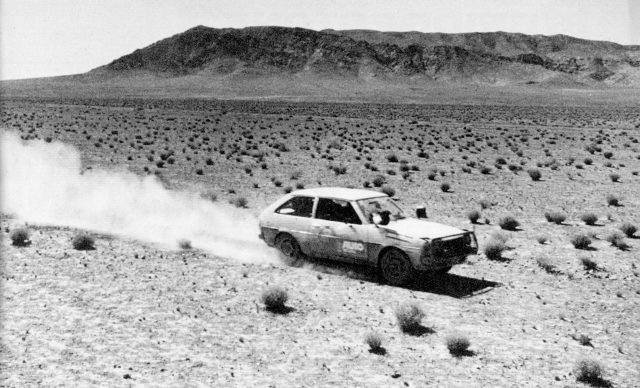
It is all too easy to characterize the GLC as a proverbial econobox. But consider its role in putting bread on Mazda’s table at a time, when the company was distilling rotary power into the first generation RX-7. And imagine sprinting across the deserts of Iran and Afghanistan at an average speed of 62 mph in the summer with nary a mechanical glitch. Or fantasize about one of the best sleeper formulas in a rotary-swapped GLC/323.
The GLC’s direct descendant today is the Mazda3. Curiously, Mazda undertook another Hiroshima-to-Frankfurt trek in August 2013, this time with the first third generation Mazda3s coming off the production line.

Crossing Russia, Belarus, Poland, then into Germany, the cars reached destination just in time for the Frankfurt International Motor Show. May cars like the GLC and Mazda3 continue to thrive and put bread on the table so that Mazda can make its dream and magic come to life.
Some photos courtesy of Mazda.


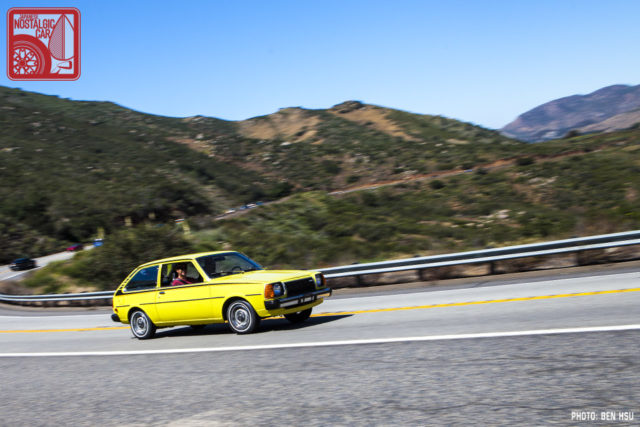
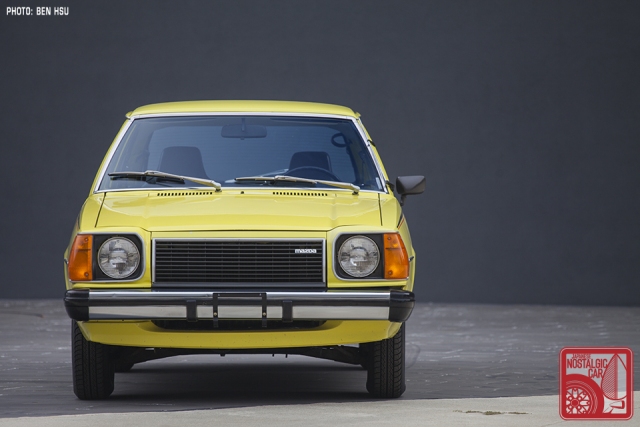



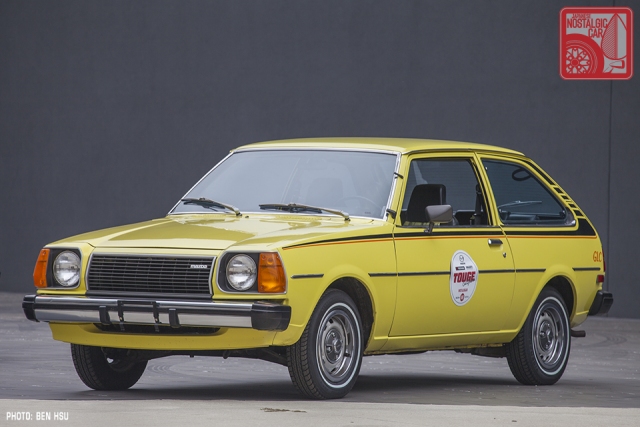








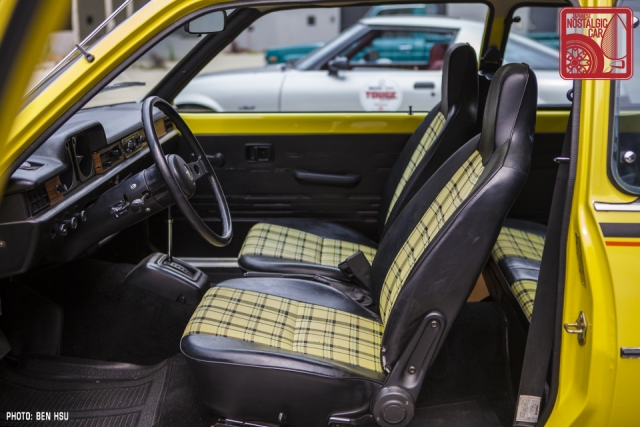






poor man car in 80’s Kuwait….
Locally assembled in Greece. Quite popular.
They did it well in the 25th Acropolis Rally (1978) when 3 of them sponsored by mazda Greece won the “cup of the manufacturer”. 2 more did it to the end.
https://www.youtube.com/watch?v=ATqTyhpd1BQ
(1:57-2:10)
Always wanted one of these last of the rear drive hatches. Even more rare than the Starlet though… Ill find one one day
I had an 81 GLC wagon, purchased with 100,000 miles. It was in museum condition with a back seat that was never used, original books in the glove box and original mats. Immaculate. Tasteful silver with black interior. Wheel trim rings and manual box. Lots of room and sipped fuel. I replaced it with a celica gt liftback. Wish I could have kept them both.
My first new car! Mine was red with red plaid seats with auto trans. $63 for 36 months which fit the budget at the time. Lots of small niceties which revolved around the rear hatch. Electric hatch release and rear wiper/washer which were not found on other econoboxes at the time were a big deal. Ha!
The VW Rabbit was the car to get but its high price made it out of reach for many. The GLC was cheap and cheerful and had the modern two-box design everyone wanted at the time.
One of my sisters bought one. She was shy of money so bought a basic model with no radio. Her kids decided to put a radio in for mother’s day. Son looked under the dash to see what they would need. Surprise! The wiring harness and speakers were already installed. Save money and assembly time by standardizing the harness and assembly line time. Good call.
Back in 85 I had the pleasure of driving one with 5 speed manual only for 3 weeks, great little car indeed.
Now days still enjoying the GTX.
https://flic.kr/p/pzTCtf
I remember seeing ONE of these bopping around in the early/mid-’80s, but not on a regular basis. As I recall, it was a SLIGHTLY darker green than the above one.
Wouldn’t mind something like that for the daily runaround vehicle. If a mostly stock one made it through that kind of a rally, then it should survive just about anything us city boys would likely do with it. I think the biggest weakness was the propensity to rust, but that was pretty much industry-wide back then.
The thin pillars makes for GREAT visibility, unlike today’s mail slot design.
Wish we could get all-terrain tires in those smaller sizes today, too!
That’s a beautiful little car. I’d love to have one in that condition, but with a manual transmission. My wife had a white, 1979 GLC (4-speed) before I knew her and she traded it on a brand new, white, 1988 323 (4-speed) right before we met. That 323 was a super fun car, other than blowing the head gasket, twice.
We had a 1978 red GLC with a manal transmission and air conditioning. This was our family’s third Japanese car, after a 1970 Toyota RT80 Corona, my 1974 TE27 Corolla SR5.
Compared to my SR5, it rode way smoother than my go-kart suspension, and a light clutch compared to the work out on my T50 5-speed. The visibility was unmatched, and was a great car until my idiot brother decided to try to work on it… I think it was traded in for my sister’s RA60 Celica LIftback.
Wow… never see one like that in Va. Love the yellow, also dig the green. Keep the Mazda love (and Isuzu love) going!
Reminds me of the Chevrolet Chevette looks wise.
Love the decal package and seats in this particular car. screams 80’ies so much 🙂
I had a yellow 323 wagon. Only last week I was dreaming to buy back another, it was a great car to learn on. Still very basic mechanically, but much more room in the engine bay than my Mini!
http://japanesenostalgiccar.com/forum/forum/garages/mazda-garage/2313-1978-323-wagon
That brings back memories, I had a UK spec 1978 323 1.4 sp manual in 1988. A great fun car to drive after passing my driving test. It suffered from rust quite badly though
I remember owning a Ford Laser in my day. It was a replacement car for one that was stolen from me. I found it sitting on the street in my neighborhood with a for sale sign stuck to it. After being without any wheels for the better part of a year, I decided to spend my money on the gold/brown colored car and had a look at it. I was handed the key and told to check it out.
Well, when I got into the car, it was musty from disuse and was quite dusty. BUT, when I turned the key after making sure the engine had no leaks and the oil looked full, she sprang to life and a love affair was born. It was my freedom restored in a very peppy car. I decided then that we would be the best of friends.
I owned the car until migrating to the country in the early ’90’s. I first installed a nice sound system, and acquired a cool real wood-grained steering wheel. I first worked on getting is all cleaned so it wouldn’t be difficult to work on. I got a nice set of white seat covers and cleaned all the old tint from it. It was beginning to look like a decent ride.
It was a plain Jane daily driver to work and back but dating in the car was still a ways away. With no air conditioning, I had to do something. I attended a car show and quickly met and made friends with an air conditioning guy who told me he can make me a super deal…and ended up with a freezer of a car even in the heat of the Philippine summer. I still refused to tint the car though.
Finally, to top things off, I purchased a new set of wheels and had the seats reupholstered and brought my little Laser/323 to a level that made me proud to show it off. Through all the time since I bought the car, it never missed a beat. It never saw the inside of a shop for repairs and whenever I come across articles like this, I remember the good old days. I now own a first generation Mazda Miata that rarely gets parked on the driveway much less the street. Hopefully I am able to take my baby to the Touge California someday. I’ll always have a place in my heart for these little Mazda’s.